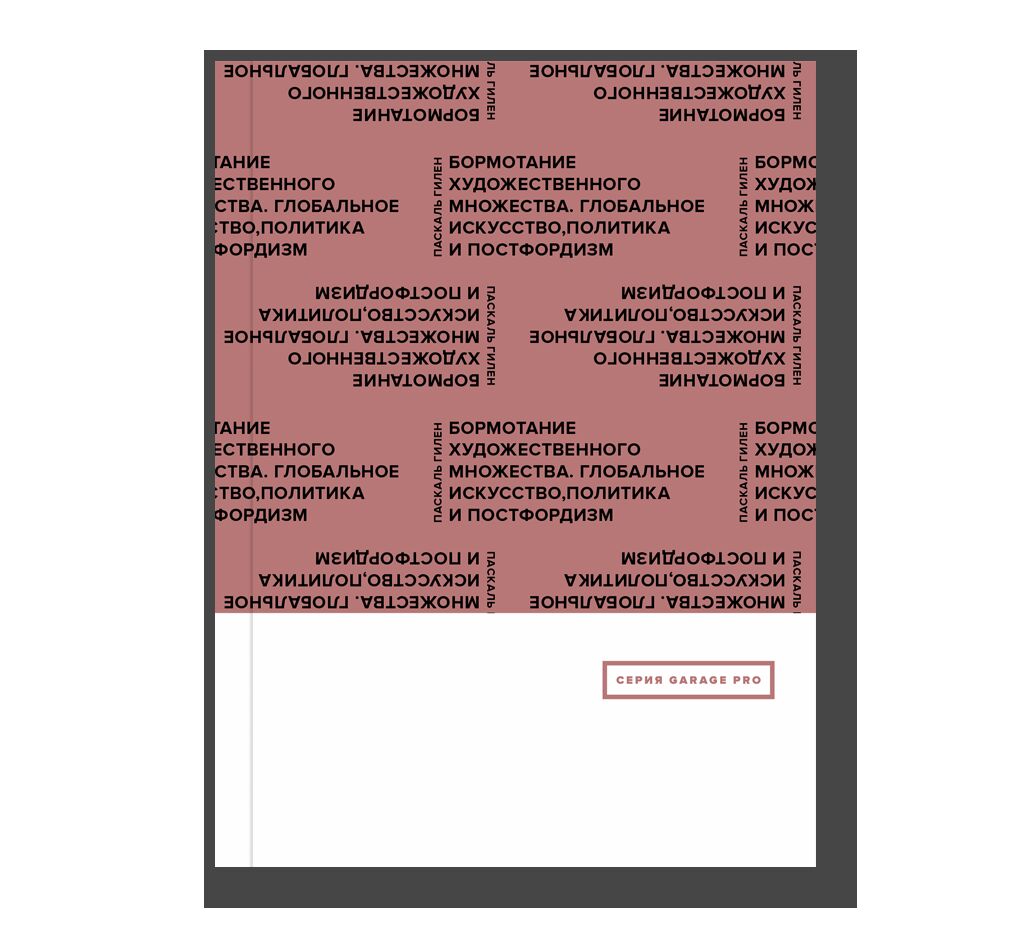The Murmuring of the Artistic Multitude: Global Art, Politics and Post-Fordism
- Year: 2015
- Language: Russian
- Publisher: Ad Marginem
- ISBN: 9785911032661
- Page: 288
- Cover: paperback
- About the Book
Compilation of essays on contemporary art theory and practice, and on art’s connection to politics, economy, and social processes.
The concept of artistic multitude introduced in the title of the book points, on the one hand, to the growing number of people belonging to the creative class in recent decades, marked by an increasing openness in the art scene. It also emphasizes, on the other hand, the fact that the artistic community is the perfect example of a multitude, as described by Italian thinker Paolo Virno (from whom Gielen borrowed the concept): it is hybrid, fluid, deterritorialized, and constantly moving.
Another key concept of the book—that of murmuring—refers to the bubbling of life, which is quite different from senseless noise, yet able to resist the multiplication of mainstream ideas and meanings. “The art world today is a field full of paradoxical meanings that constantly contradict, undermine and invoke each other. It is indeed a collective visual or auditory murmur.”
The multitude, too, is more than a faceless mass: heterogeneous, with well-defined individual differences, it can still act as one and function as a social subject.
Technological breakthroughs of recent years, which have brought us the Internet and cheaper travel, have led to greater mobility for artists and cultural products, and thus, to a global art world, spearheaded by visual arts and pop music. Artistic multitude transcends national borders and forms one cultural body.
Like post-Fordist labor in general, individuals in artistic multitude are characterized by physical and intellectual mobility, proficiency in communication and languages, and flexible working hours. These traits have been shaped by the transition from material to non-material labor, the products of which have greater symbolic than consumer value.
Today, non-material labor is characteristic of the entire society, but Pascal Gielen argues that such organization of labor started and was first tested in the arts—for instance, in Marcel Duchamp’s studio: “the social structure of the early modern art world was one of the social laboratories in which the current post-Fordian work ethic was produced.”
Individual style, which has become so important for any artist today, is a symbolic, non-material product, while communication and languages have come to the forefront in art itself, and in art criticism and theory, which are essential to perception and interpretation of art. Thus, as Pascal Gielen claims, any accusations of marginality, decadence and alienation, directed at contemporary art, are now absolutely unfounded. In the last 20 years art, or at least “the artistic,” has moved from the periphery to the very center of society.





